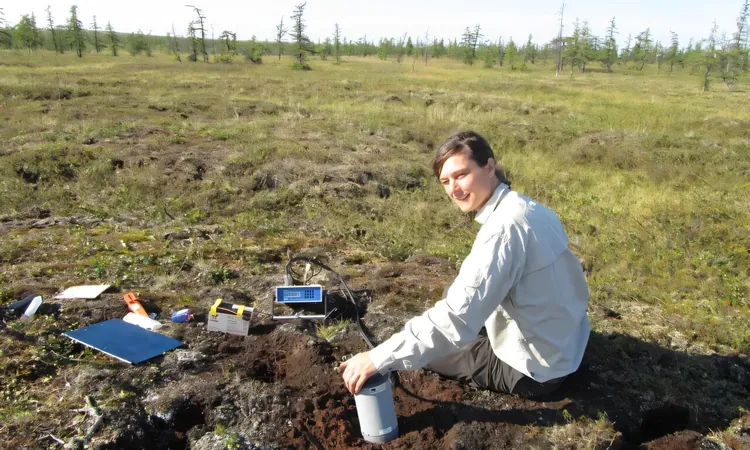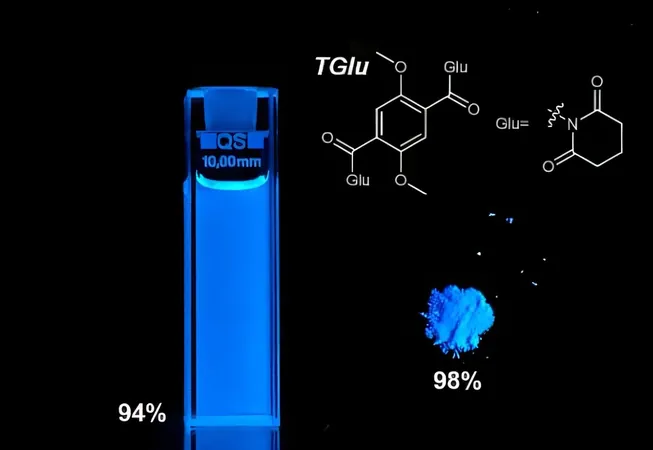
The Alarming Role of Permafrost Microbes in Accelerating Climate Change!
2024-11-04
Author: Michael
Introduction
Ecologist Christina Biasi is uncovering the shocking contribution of microorganisms in permafrost to the emission of nitrous oxide (N2O), a potent greenhouse gas that could have severe implications for future climate scenarios.
The Discovery of N2O Emissions
Over 15 years ago, Biasi and a dedicated team from the University of Eastern Finland stumbled upon an unexpected phenomenon in the Arctic tundra. While investigating gas emissions from permafrost—soils that remain frozen for over two years—they were astonished to find significant levels of nitrous oxide, alongside the more common carbon dioxide (CO2) and methane (CH4). “When we analyzed the gas samples, we were caught off guard by the high concentrations of N2O; it compelled us to dilute the samples for proper measurement,” she explained, reflecting on this pivotal moment in her research.
Biasi’s preliminary findings led to one of the first research papers on nitrous oxide emissions from permafrost, published in 2009. However, her current research project, titled "Constraining the Global Permafrost Nitrous Oxide Budget" (PERNO), aims to delve much deeper into the production mechanisms of this gas, often referred to as laughing gas, in permafrost environments.
Microbial Mysteries Beneath the Ice
N2O is intricately linked to the nitrogen cycle. Traditionally, the primary sources of this gas have been agricultural soils, where nitrogen-based fertilizers are applied. However, natural ecosystems, including permafrost, were underestimated as potential sources until recent findings revealed otherwise.
Biasi pointed out that “the assumption was that permafrost was nitrogen-limited and thus less significant in terms of emissions.” Recent studies have changed that narrative, showing that some regions within permafrost emit nitrous oxide at alarming rates. As climate change continues to thaw these frozen terrains, an abundance of organic material becomes available, allowing thriving microbes to feast on the nitrogen and release even more N2O.
Innovative Research Techniques
Collaborating with Ph.D. student Matej Znaminko and research assistant Tatiana Trubnikova, Biasi is currently analyzing samples from approximately 50 peat bog soils collected from diverse regions like Canada, Siberia, and Scandinavia. In their laboratory experiments, they are manipulating temperature and humidity levels—simulating conditions that may arise due to climate change—to assess how these factors influence nitrous oxide emissions.
By employing isotope analysis, Biasi and her team can identify which microbial processes are actively producing N2O in these varying conditions. Nitrogen isotopes—namely nitrogen-15 and nitrogen-14—offer a telling “fingerprint” that reveals the microbial activity related to nitrogen processing, shedding light on the ecology of the permafrost.
Urgent Implications for Global Warming
With nitrous oxide being 300 times more potent in warming potential than CO2, the stakes are undeniably high. Biasi warns that nitrous oxide levels, which have surged by 40% since the 1980s, could spike dramatically as the Arctic regions warm. "If this trend continues, it is assumed that nitrous oxide emissions in these areas will climb,” she said, emphasizing the cascading effects of climate change on permafrost.
As the clock ticks towards a potential loss of 80% of the northern peat bogs by 2100, the repercussions are dire. “Once permafrost thaws, it won’t quickly refreeze, and we could see emissions equivalent to those from some of the largest polluting nations such as China and the U.S.,” she cautioned.
The Need for Timely Action
The permafrost is becoming a ticking time bomb in the climate crisis narrative. Biasi urges immediate action to mitigate global warming, stating, “The thawing of permafrost soils could exacerbate the climate crisis beyond imagination.” Her ongoing research aims to bring these overlooked nitrous oxide emissions into mainstream climate models, which historically excluded such emissions until the IPCC’s 2023 synthesis report.
As the world grapples with climate changes, understanding the hidden roles of permafrost microbes is paramount to grasping the complexities of our warming planet. The time to act is now—before we inadvertently create a ‘permafrost nation’ with irreversible impacts on global ecosystems and climate stability.









 Brasil (PT)
Brasil (PT)
 Canada (EN)
Canada (EN)
 Chile (ES)
Chile (ES)
 Česko (CS)
Česko (CS)
 대한민국 (KO)
대한민국 (KO)
 España (ES)
España (ES)
 France (FR)
France (FR)
 Hong Kong (EN)
Hong Kong (EN)
 Italia (IT)
Italia (IT)
 日本 (JA)
日本 (JA)
 Magyarország (HU)
Magyarország (HU)
 Norge (NO)
Norge (NO)
 Polska (PL)
Polska (PL)
 Schweiz (DE)
Schweiz (DE)
 Singapore (EN)
Singapore (EN)
 Sverige (SV)
Sverige (SV)
 Suomi (FI)
Suomi (FI)
 Türkiye (TR)
Türkiye (TR)
 الإمارات العربية المتحدة (AR)
الإمارات العربية المتحدة (AR)